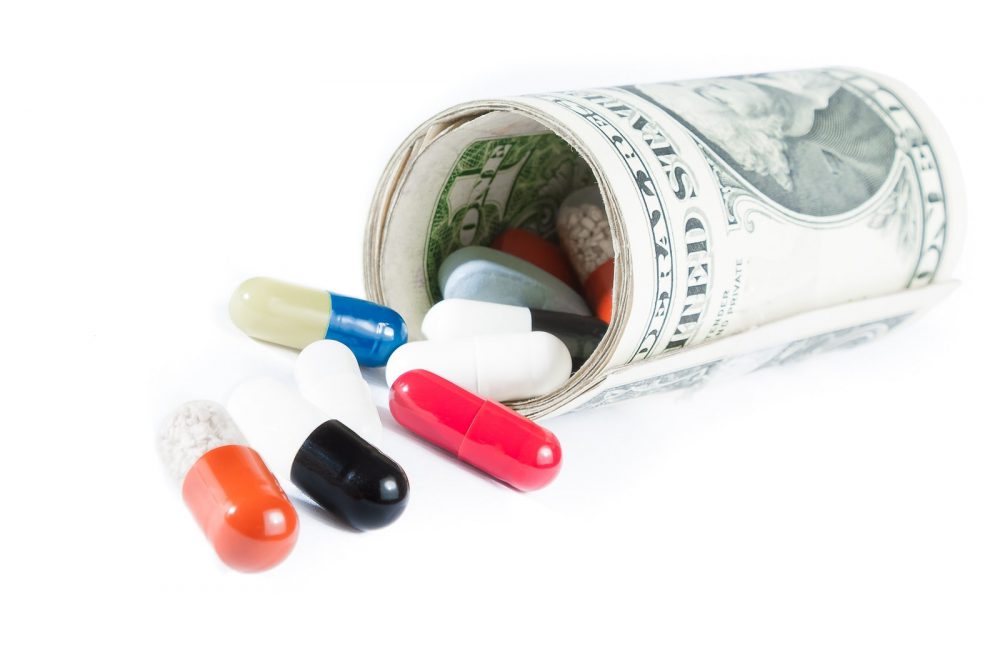
As the availability and increasing variety of prescription medicines continues to grow, a new study estimates that the annual amount paid for drugs in the United States will top $400 billion in four years or less.
The April 2016 IMS Institute for Healthcare Informatics report, Medicines Use and Spending in the U.S.: A Review of 2015 and Outlook to 2020, looked at how different medications are used by the public, the volume of use, increases in patient cost and changes in delivery and accessibility due to the country’s evolving healthcare system.
According to the report, in 2015, the U.S. paid a combined $310 billion on medicines between insurance, government and patient costs, an increase of 8.5% from the previous year. The increase can be attributed, in part, to a surge of new medications becoming available and the continued expenditure for specialty drugs, which increased more than 15%.
The IMS Institute estimates that spending should see a slower growth rate of 4-to-7% annually through 2020 following a historic high in 2014 due to price hikes and demand for expensive specialty medications.
Industry Trends
The institute’s report analyzed a number of long-term trends that were sparked by the Affordable Care Act and the public’s reaction to rising healthcare costs overall due to an increase in the number and variety of healthcare facilities and providers.
“The challenge of balancing access and the cost of care in an era of innovative but more expensive treatments continues as a theme across our healthcare system,” said Murray Aitken, senior vice president and executive director of the IMS Institute for Healthcare Informatics in a statement.
The rising cost of medications has become a focal point in the 2016 election cycle with several candidates, including Democratic presidential contenders Hillary Clinton and Bernie Sanders calling for pharmaceutical manufacturers to stop widespread price increases.
In particular, in 2015, Turing Pharmaceuticals raised the price of Daraprim – a drug used to treat people with weakened immune systems, including patients with AIDS and those undergoing chemotherapy – by 5,000% from $13.50 to $750 per pill before receiving widespread public condemnation, according to The New York Times.
You Might Also Enjoy: The History of Prescription Drugs
High Prescription Drug Prices
The IMS report found that while invoice prices for branded medications rose in 2015, increased competition among manufacturers and efforts by health plans and pharmacies successfully limited some growth. For example, generic alternatives to major brand medications generated $115 billion in 2015. Specialty drugs and new medications, including 43 new active substances and 30 new brand medications introduced in 2015, also offered additional options to patients previously unavailable.
The total volume of prescription-based medications dispensed in 2015 was 4.4 billion, a slight 1% increase, with the highest demand seen in antidepressants and anti-diabetes medications.
Despite an expansion in coverage through the Affordable Care Act, President Obama’s signature healthcare initiative, patients in 2015 were still feeling the effects of higher drug prices.
Patient costs for medications filled through a commercial health plan attached to a specific pharmacy provider continued to increase last year, averaging $44 per prescription. For patients primarily using generic alternatives, the cost has remained at an average of $8 per prescription since 2010.
The increase in prescription costs can be traced, in part, to the changing nature of healthcare. Since 2010, the delivery of prescriptions has expanded significantly to include providers affiliated with an Integrated Delivery Network (IDN), in-house pharmacy clinics and urgent care centers and scripts written by nurse practitioners and physician assistants.
While IMS estimates that brand prices for specific drugs will continue to increase by 10-to-12% over the next few years, those costs likely will be offset by account rebates, discounts and other price concessions.
Robert Zirkelbach, spokesman for PhRMA, a drug industry group, was quoted by U.S. News & World Report as praising the impact of cost-saving measures negotiated by payers for brand medicines.
“This is yet another report confirming how the competitive biopharmaceutical market works to control costs,” Zirkelbach said.









